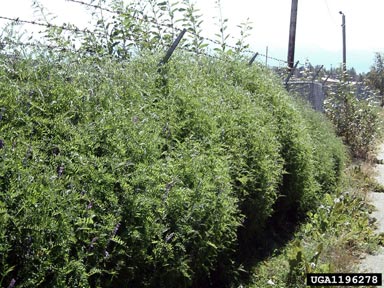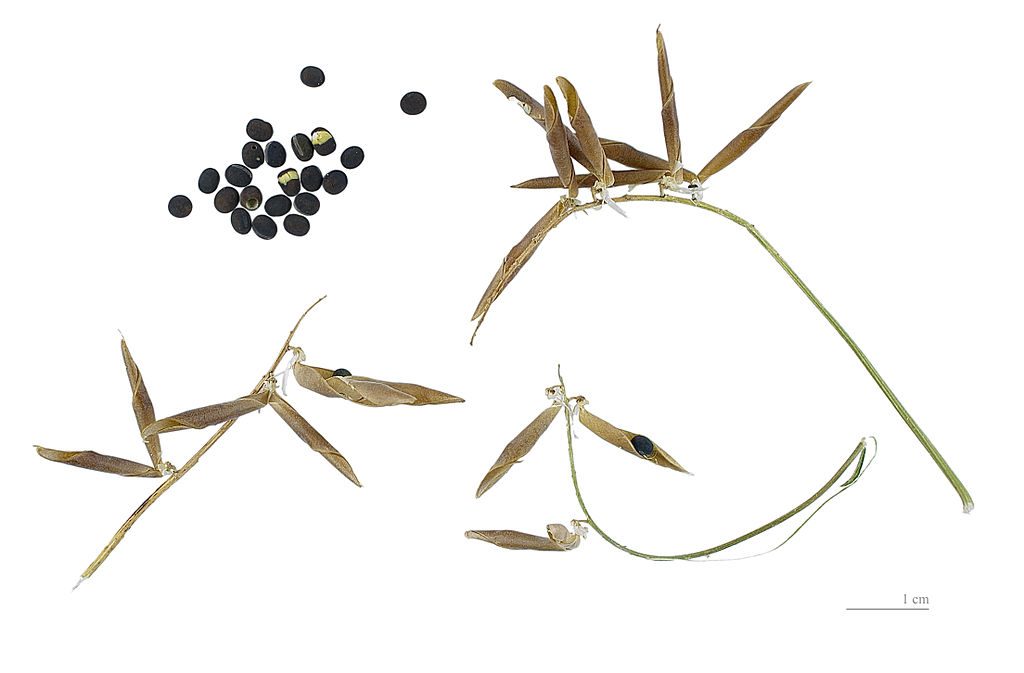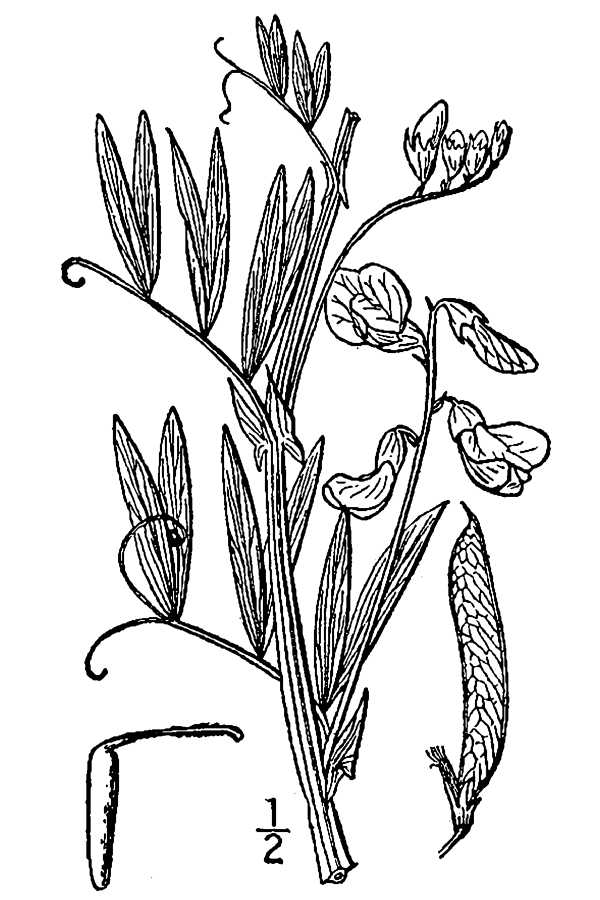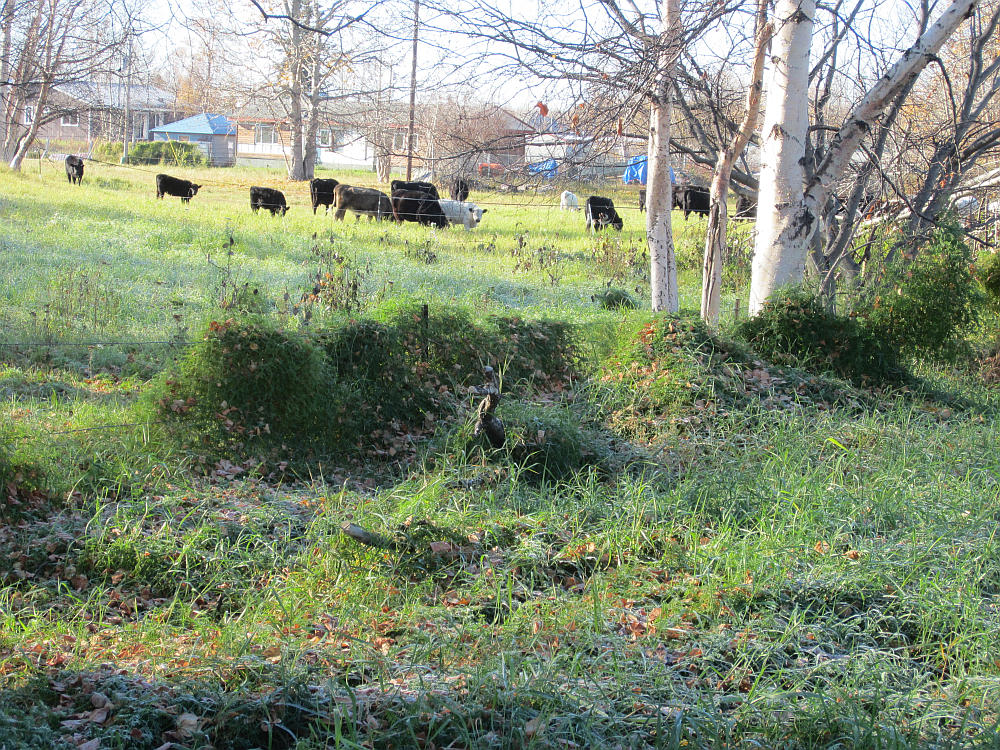Learning objectives
- Understand biology and identification of bird vetch
- Understand impacts of bird vetch and mitigating impacts with IPM goals
- Understand prevention strategies for bird vetch
- Understand control strategies for bird vetch
- The species
a. General description, biology, invasive potential
Bird vetch is a perennial vine in the pea family that is native to Eurasia. Pea family plants are able to fix their own nitrogen through an association with micorrhizal fungi that reside in nodules on the roots. Nitrogen fixation allows species like bird vetch to grow in areas of low fertility. This can be a desirable trait for crops, especially if they will be used as a soil building green manure.

Bird vetch produces many seeds that develop in pods. The seeds are relatively large, and not particularly adapted to long distance dispersal without the aid of animals or human activity. Seeds can be spread through soil, forage, or straw. Extensive seed banks can form; however, seed are only viable for up to 5 years.
In addition to seed bird vetch spreads by rhizomes, which are underground stems that grow shoots and new roots. Portions of rhizomes can spread to form new infestations when soil containing viable portions of the rhizome is moved.
Bird vetch is a Restricted Noxious Weed in Alaska. The “restricted” status means that it cannot be sold as a contaminant in seed at amounts higher than specified. However, it can be sold as bird vetch.
b. Identification
Bird vetch is a perennial vine with weak stems and tendrils at the end of leaves that aid in climbing host plants, fences, and other erect objects. The climbing ability of bird vetch results in a smothering growth habit. Leaves are pinnately compound with 8-10 pairs of leaflets. Flowers are light purple or violet, and are arranged on one side of a raceme with many flowers. The resulting fruits are narrow pods each containing approximately 5 seeds; the number of seeds can vary.

c. Similar species and native “look-a-likes”
Species similar to bird vetch that are often mistaken include the non-native hairy vetch (Vicia villosa) which has 10-20 leaflets and stems covered in long spreading hair. Bird vetch lacks hairs. Similar looking native species include marsh pea (Lathyrus palustris). Marsh pea is also a climbing spreading pea, but typically does not grow as vigorously as bird vetch. The stems of marsh pea and other Lathyrus species in Alaska are winged while bird vetch stems are angled. One of the best ways to distinguish a winged stem from an angled stem is to twirl the stem between two fingers. The angled stem will have abrupt edges, while the winged stem will flap between your fingers. Marsh pea in particular appears to be mistaken for bird vetch regularly, and should be described as a native look-alike that should not be pulled by accident.

d. Introduction to North America and Alaska
Bird vetch was introduced to Alaska at experiment stations starting in the early 1900’s and spanning through the 1950’s. The goal of these introductions was to use bird vetch as a forage crop, and as green manure for low nutrient soils. However, bird vetch did not work as well as desired as a forage crop because when harvested it loses vigor in comparison to other forage crops such as timothy and brome hay. Bird vetch is a desirable pasture forage, but may over climb grasses reducing their vigor. When forming large mats, vetch typically produces leaves on the outside of the mats. Leaves are the nutritious portion of the plant, and the mats give vetch an appearance of lots of biomass for forage, when in actuality the quantity of edible tissue is small. For these reasons bird vetch trials were largely abandoned, and it never caught on as a widely used forage crop.
Despite its lack of widespread agricultural use, bird vetch has spread widely in Alaska. A mapping project conducted in 2002 by the Plant Materials Center determined that the densest infestations were near the University of Alaska Agricultural Experiment Stations in Palmer and Fairbanks (Nolen, 2002). The infestations have spread from those original introduction points to roadsides and waste areas. Bird vetch may be particularly suited to spreading on roadsides because its’ hard seed is adapted to disturbance, and because of the low growing trees maintained by infrequent mowing schedules.

To understand more about the interaction between some weeds and roadsides view this video clip.

